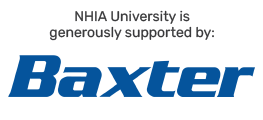
The 5 Most Common Viable Sampling Errors - On Demand
-
Register
- Prices available after logging in
As the frequency of viable sampling increases, more sterile compounding facilities are managing sample collection, incubation, and analysis in-house. This significant undertaking demands skilled and dedicated personnel to ensure compliance with USP General Chapter <797>, while also integrating microbiological best practices not explicitly covered in the chapter. Designed for pharmacists and pharmacy technicians, this presentation will highlight five common mistakes sterile compounding facilities make when implementing in-house viable sampling and incubation processes.
Learning Objectives:
- Identify potential shortcomings in your sterile compounding facility's viable sampling program.
- Discuss changes that can be made to the viable sampling program to ensure compliance.
- List industry standards and guides that aid in the development of a robust viable sampling program.
Abby Roth, BS, CMQ/OE
Founder
Pure Microbiology
Abby Roth, founder of Pure Microbiology, has over 18 years of experience in supporting the testing and consulting needs of the pharmaceutical, medical device, and compounding industries. Her background in pharmaceutical microbiology includes extensive knowledge of environmental monitoring. Abby served as a USP Compounding EC member during the 2015-2020 cycle. She is an involved member of the Controlled Environment Testing Association (CETA), serving on the Board of Directors, speaking at its annual meetings, and chairing committees for the revision of four CETA Application Guides. Abby has been invited to speak for state boards of pharmacy and for national organizations.
NHIA Requires planners, faculty, and others who affect the content of this activity to disclose all financial relationships they have with ineligible companies. All relevant financial relationships are thoroughly vetted and mitigated according to policy.
Abby Roth has no relevant financial relationships with ineligible companies to disclose.
